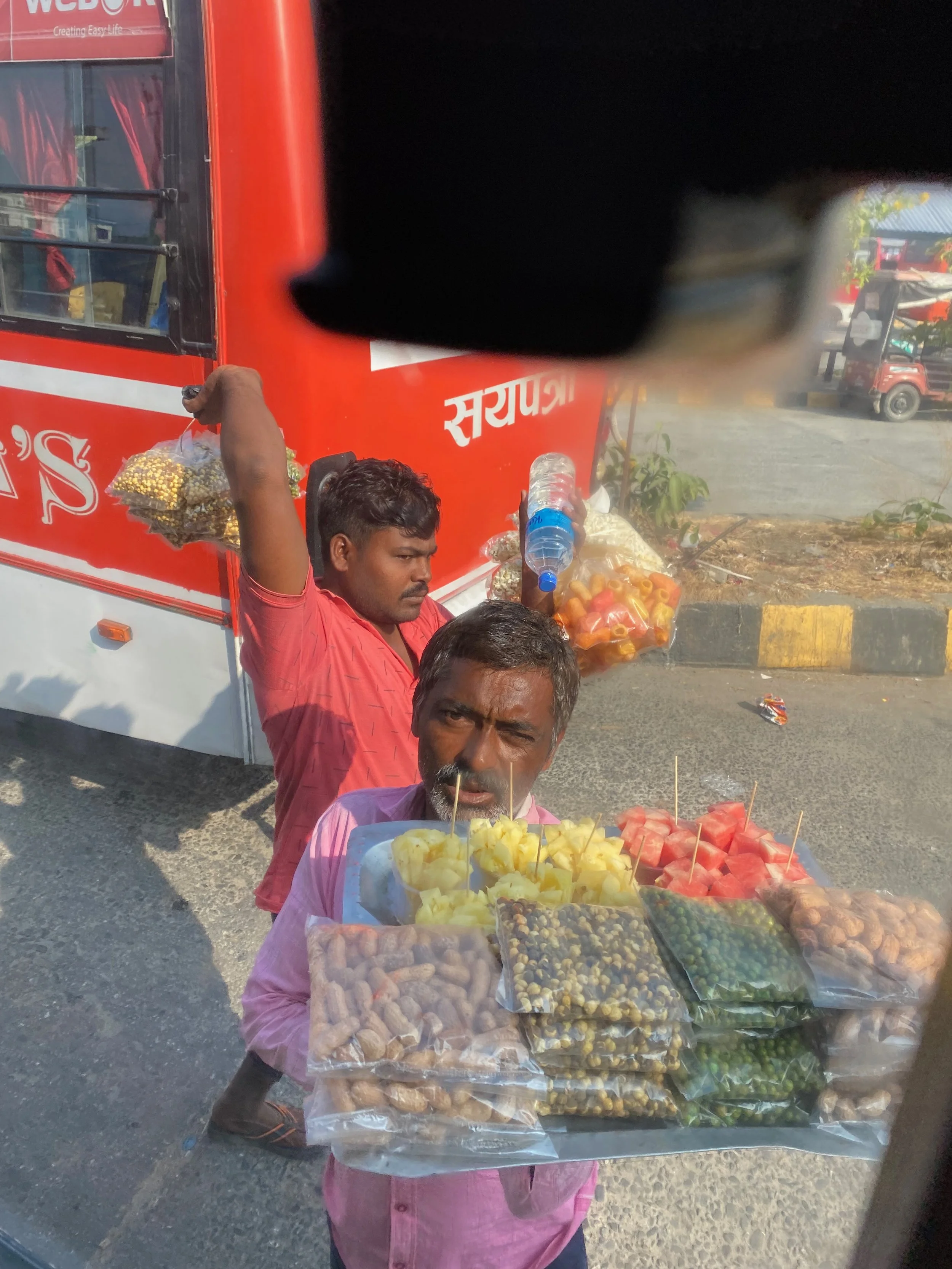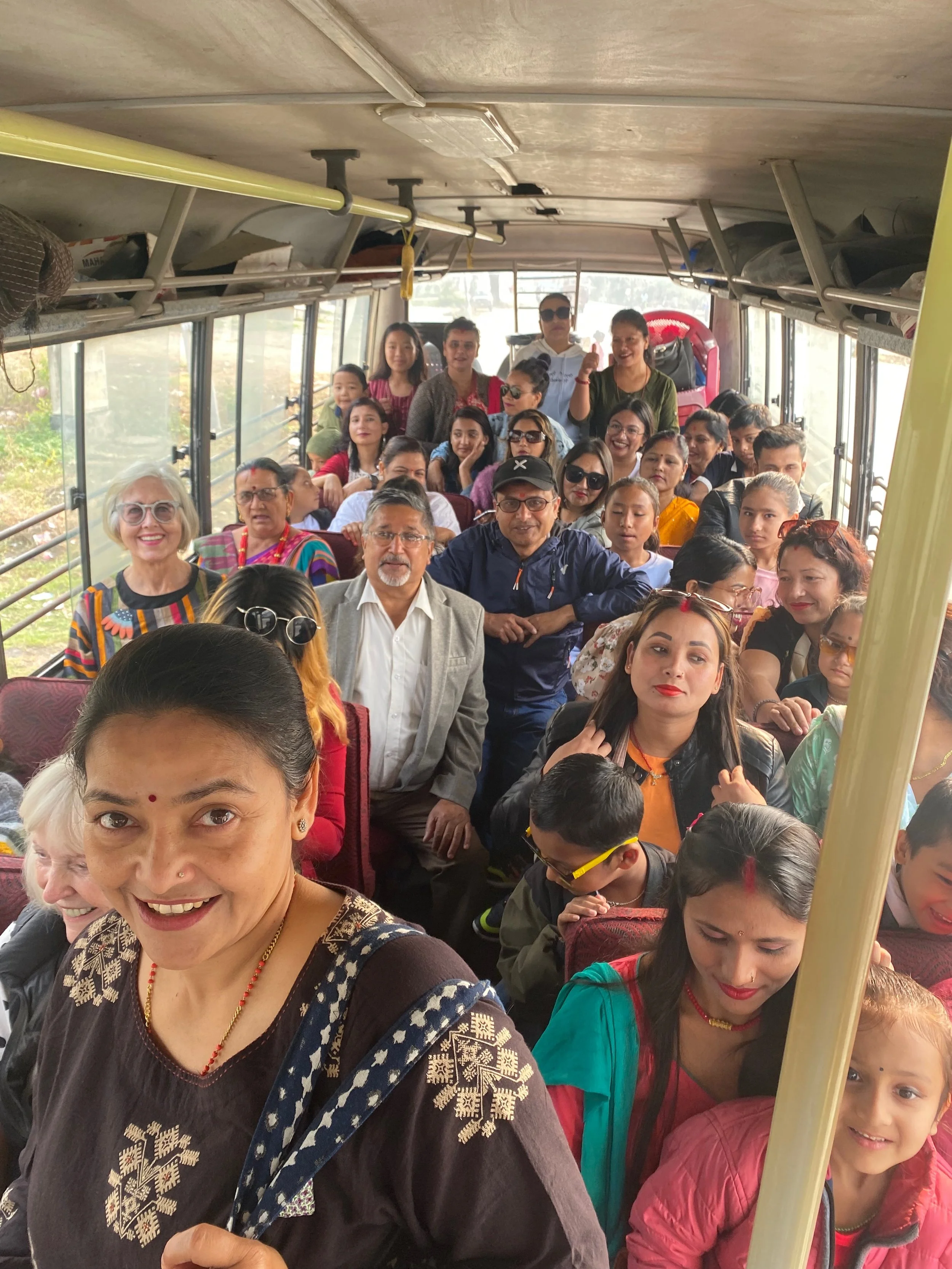A bus trip with Om
Sometimes people ask what it was like to LIVE in Nepal and they are particularly interested in the transport.
Every fortnight, I caught a bus from Dharan (where we lived) to Birtamod to spend a week with the Samunnat girls. This trip took anything from 3-9 hours depending on how things were. Every trip meant relinquishing a sense of control and releasing attachment to certainty.
On one occasion in 2009, our Office Manager du jour (let’s call her OM) accompanied me back to Dharan to get some supplies. She was a feisty, chatty, young woman who came to Samunnat to obtain a divorce and her rightful settlement. She did computer training and took on the Office Management because her approach to polymer work was somewhat…distracted. She needed to meet suppliers so the women could purchase supplies independently of me. Our conversation on the bus was going to be limited given her English skills and my Nepali skills but she was VERY excited about coming with me. Bless her.
Before we left, Kopila plied us with chiya and eggs and beaten rice - a snack to sustain us for the journey (hopefully 3 hours). We boarded the bus and there was the usual heated discussion about how much we’d pay and when we’d pay it. Generally, people didn’t pay until they were at least halfway to their destination. This was reasonable given that reaching a destination on the bus you started with was not a foregone conclusion! You’d only pay the driver for getting you as far as they did.
And this happened more than you’d think.
Having said that, there was rarely an issue about getting a refund or not having to pay on the next bus. There was some arrangement.
So, there was the usual heated discussion between OM and the driver about the fare, followed by the usual chat about who I was, what I did, where I lived, whether I was married and whether I had sons. Then OM delightedly told everyone on the bus that I could speak Nepali and we all had a good laugh when I said, Just a little. Happens every time.
The rain, which started as a sprinkle, got much heavier at this point and visibility was poor. OM and I had just about exhausted the topics I could cover in Nepali and were beginning the cycle again when she suddenly asked (and I miraculously understood) whether buses in Australia were like this. I pondered, mainly to work out how to say the answer in Nepali.
Well, in Australia, the buses have windscreen wipers so that, even in rain, you can see out the front window as oncoming vehicle approach.
I used the English word for windscreen wipers as, quite possibly, there isn’t a Nepali one. My excellent windscreen wiping gesture meant OM understood. And what a good idea she thought that was.
She excitedly told the bus conductor, with gestures, about windscreen wipers and yes, he thought it was a good idea too and he had seen buses with these and they were good. And private cars had them. And that was good.
However our bus didn’t have windscreen wipers.
Perhaps it was the excited response to the idea of wipers but I also took the opportunity to promote the case for seat belts:
Australian buses have seat belts.
No excited response there - maybe that was just one of those funny Australian things.
I wanted to say that the upholstery on Australian buses was so BORING compared to the wonderful flocked carpet remnants that typify Nepali buses, but that was way beyond my skills.
Nor could I explain that in Australia, blind men with beautiful voices don’t board at large town stops to sing for a rupee. Australian buses have no troupes of wily kids cruising up and down the aisles asking for money please, aunty.
In Australia, gold toothed women in fabulous traditional jewellery never plonked heavily into the seat beside me, asking me about my own jewellery and the state of the nation. One neighbouring gold-toothed, jewellery laden passenger leant across me, digging her surprisingly sharp elbow into my increasingly full bladder, and hoiked expertly out the window.
Better that than an inexpert hoik.
Despite language limitations, conversations on the bus were nearly always fun and fascinating and gave an insight into the life of the people. And, once satisfied, people were happy to sit in silence which I also greatly appreciated.
(Buses were usually well packed, like this one for a Samunnat picnic. Some of you might spot some well-known faces.)
OM basically established the background of just about everyone on the bus and was about to begin her bus sleep when I realised that there was another difference that I could say in Nepali:
When you are in a bus in Australia, even when it is raining, you stay dry.


